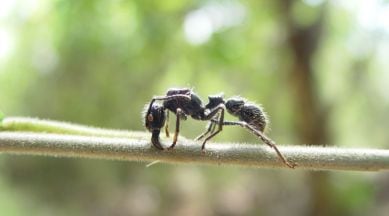‘Most painful insect sting’ from Bullet ants uses neurotoxins in a way never seen before
The venom of the bullet ant and the green ant works using a neurotoxin that affects nerve cells, prolonging and intensifying pain.

The Schmidt pain index is a scale that rates the amount of pain caused by various insect bites developed by entomologist Justin O Schmidt. The most painful stings are given a rating of four on the pain index and in the original version of the index only one insect got that rating–-the bullet ant.
Now, scientists have discovered that the venom of bullet ants and some other ants contain a neurotoxin that interacts with the nerve cells of the victim to prolong and intensify pain. The research was published in an article in the journal Nature Communications last month.
“Bullet ant stings can be painful for up to 12 hours and it’s a deep drilling pain you feel in your bones with sweating and goosebumps, quite unlike the 10-minute impact of a typical bee sting,” said Samuel Robinson, lead author of a the study, in a press statement.
According to Robinson, the researchers showed that the venom of the bullet ant and the green ant target the nerve cells that send pain signals. Usually, these nerve cells usually open only for brief periods in response to a stimulus. But the study discovered that ant toxins bind to “sodium channels” and cause them to open more easily and stay open. This means that the pain signal will be long-lasting.
Also, these neurotoxins which target sodium channels are unique to ants and “no one has found anything that looks or acts the same way,” according to Robinson.